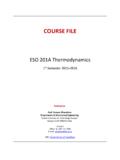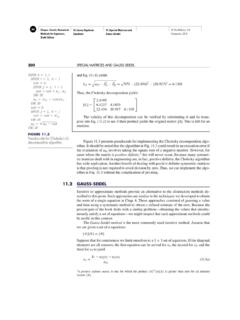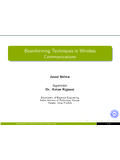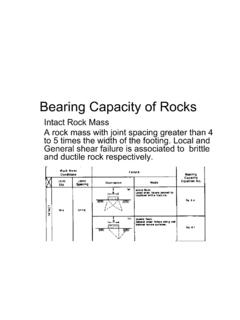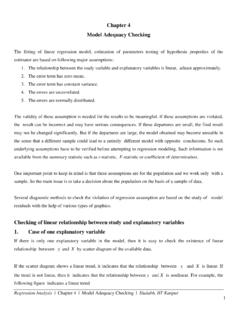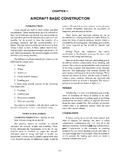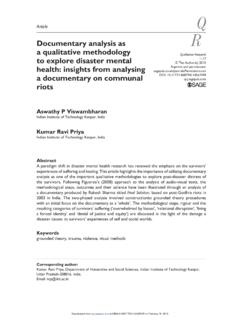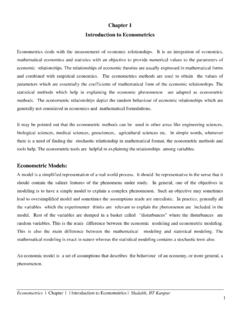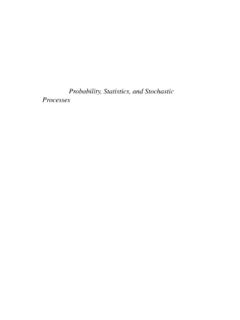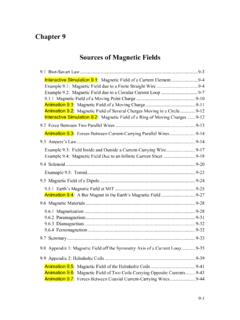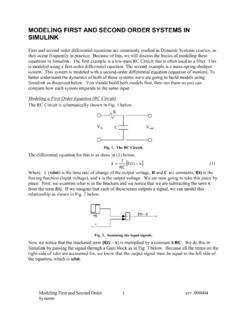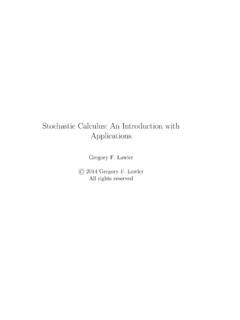Transcription of Air Pollution Modeling – An Overview
1 Daly, A. and P. Zannetti. 2007. Air Pollution Modeling An Overview . Chapter 2 of AMBIENT AIR Pollution (P. Zannetti, D. Al-Ajmi, and S. Al-Rashied, Editors). Published by The Arab School for Science and Technology (ASST) ( ) and The EnviroComp Institute ( ). Chapter 2 Air Pollution Modeling An Overview Aaron Daly and Paolo Zannetti The EnviroComp Institute, Fremont, CA (USA) and Abstract: This chapter presents a brief review of air Pollution Modeling techniques, , computer methods for the simulation of air quality processes.
2 The review includes models developed or recommended by governmental agencies for regulatory applications. Both non-reactive ( , plume models) and reactive ( , photochemical models) are discussed. We also provide Web sites where the reader can download Modeling software. Key Words: Air Pollution , Computer Modeling , Eulerian and Lagrangian models, Gaussian models, puff models, photochemical models. 1 Introduction1 Air Pollution Modeling is a numerical tool used to describe the causal relationship between emissions, meteorology, atmospheric concentrations, deposition, and other factors.
3 Air Pollution measurements give important, quantitative information about ambient concentrations and deposition, but they can only describe air quality at specific locations and times, without giving clear guidance on the identification of the causes of the air quality problem. Air Pollution Modeling , instead, can give a more complete deterministic description of the air quality problem, including an analysis of factors and causes (emission sources, meteorological processes, and 1 Builtjes, P.)
4 (2003) The Problem Air Pollution . Chapter 1 of AIR QUALITY Modeling Theories, Methodologies, Computational Techniques, and Available Databases and Software. Vol I Fundamentals (P. Zannetti, Editor). EnviroComp Institute ( ) and Air & Waste Management Association ( ). 2007 The Arab School for Science and Technology (ASST) and The EnviroComp Institute 15 16 Ambient Air Pollution physical and chemical changes), and some guidance on the implementation of mitigation measures. Air Pollution models play an important role in science, because of their capability to assess the relative importance of the relevant processes.
5 Air Pollution models are the only method that quantifies the deterministic relationship between emissions and concentrations/depositions, including the consequences of past and future scenarios and the determination of the effectiveness of abatement strategies. This makes air Pollution models indispensable in regulatory, research, and forensic applications. The concentrations of substances in the atmosphere are determined by: 1) transport, 2) diffusion, 3) chemical transformation, and 4) ground deposition.
6 Transport phenomena, characterized by the mean velocity of the fluid, have been measured and studied for centuries. For example, the average wind has been studies by man for sailing purposes. The study of diffusion (turbulent motion ) is more recent. Among the first articles that mention turbulence in the atmosphere, are those by Taylor (1915, 1921). 2 Modeling of Point Sources One of the first challenges in the history of air Pollution Modeling ( , Sutton, 1932, Bosanquet, 1936) was the understanding of the diffusion properties of plumes emitted from large industrial stacks.
7 For this purpose, a very successful, yet simple model was developed the Gaussian Plume Model. This model was applied for the main purpose of calculating the maximum ground level impact of plumes and the distance of maximum impact from the source. The Gaussian plume model is illustrated in the figure below (Courtesy: Figure 19-5 of Boubel et al., 1994). The model was formulated by determining experimentally the horizontal and vertical spread of the plume, measured by the standard deviation of the plume s spatial concentration distribution.
8 2 Air Pollution Modeling 17 Experiments provided the geometrical description of the plume by plotting the standard deviation of its concentration distribution, in both the vertical and horizontal direction, as a function of the atmospheric stability and downwind distance from the source. The plotting is presented in the figure below (Courtesy: Figure 19-6 of Boubel et al., 1994). Atmospheric stability is a parameter that characterizes the turbulent status of the atmosphere.
9 This parameter ranges from very stable , class F, to neutral , class D, up to very unstable , class A. 18 Ambient Air Pollution The experimental sigma values discussed above are, in their functions with distance from the source, in reasonable agreement with the Taylor-theory. The differences are caused by the fact that the Taylor-theory holds for homogeneous turbulence, which is not the exact case in the atmosphere. In the 1960s, the studies concerning dispersion from a point source continued and were broadening in scope.
10 Major studies were performed by H gstrom (1964), Turner (1964), Briggs (1965) (the developer of the well-known plume-rise formulas), Moore (1967), Klug (1968). The use and application of the Gaussian plume model spread over the whole globe, and became a standard technique in every industrial country to calculate the stack height required for permits, see for example Beryland (1975) who published a standard work in Russian. The Gaussian plume model concept was soon applied also to line and area-sources.
